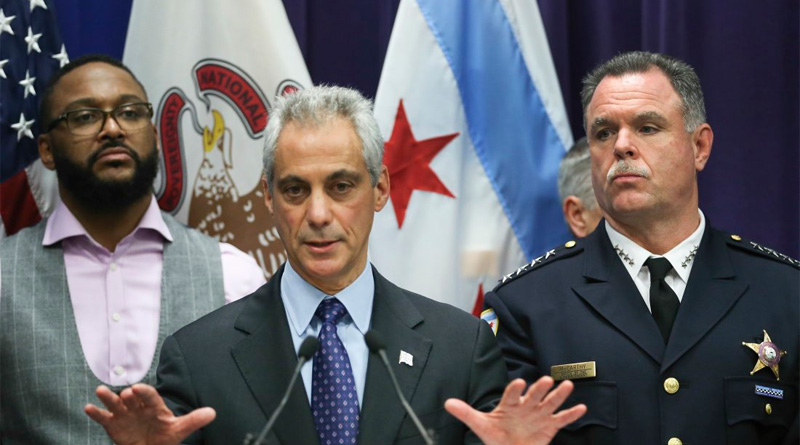Chicago’s Homicides in 2016 Are More Than New York and Los Angeles Combined
One of the most violent years in Chicago history ended Saturday with a sobering tally: 762 homicides, the most in two decades in the city and more than New York and Los Angeles combined.
The nation’s third largest city also saw 1,100 more shooting incidents than it did in 2015, according to statistics released by the Chicago Police Department. The numbers underline a story of bloodshed that has put Chicago at the center of a national dialogue about gun violence.
The Daily News reported the data released Sunday are staggering, even for those who followed the steady news accounts of weekends ending with dozens of shootings and monthly death tolls that hadn’t been seen in years. The increase in homicides compared to 2015, when 485 were reported, is the largest spike in 60 years.
New York City logged 334 homicides in 2016, according to NYPD data. LAPD data shows that there were 294 homicides in Los Angeles in 2016.
Chicago police and city officials have lamented the flood of illegal guns into the city, and the crime statistics appeared to support their claims: Police recovered 8,300 illegal guns in 2016, a 20 percent increase from the previous year.
The bulk of the deaths and shooting incidents, which jumped from 2,426 in 2015 to 3,550 last year, occurred in only five neighborhoods on the city’s South and West sides, all poor and predominantly black areas where gangs are most active. Police said the shootings in those areas generally wasn’t random, with more than 80 percent of the victims having previously been identified by police as more susceptible because of their gang ties or past arrests.
Chicago Police Superintendent Eddie Johnson was expected to discuss the newly released statistics Sunday afternoon.
The city has scrambled to address the violence. Mayor Rahm Emanuel announced last year that 1,000 officers would be added to the police department. At the same time, police officials have been trying to figure out why homicides and shootings — which began climbing the year before — suddenly surged.
Johnson has said several factors contributed to the increased violence. He noted 2016 was the first full year since the city was forced in November 2015 to release video of the fatal police shooting of 17-year-old Laquan McDonald, who was black and shot 16 times by a white police officer. The video cost former Police Superintendent Garry McCarthy his job, sparked major protests around the city, and led to federal and state investigations of the department.
It also left Johnson with the task of trying to restore public trust in what appeared to be a weakened police force, a perception that was only buttressed by a dramatic drop in the number of arrests in 2016.
While the police department has cited several factors for the declining numbers, including a concerted effort not to make minor drug arrests and focus on gun violence, Johnson acknowledged in a recent interview with The Associated Press that officers have become more cautious — in part out of fear of becoming the next “viral video.”
That, he said, has “emboldened” criminals.
“Criminals watch TV, pay attention to the media,” he said. “They see an opportunity to commit nefarious activity.”


Second City Confidential: The Black Experience in Chicago by Paul Kersey is a good book for CofCC members and like minded individuals. Chicago is a prime example of how racial diversity damages a once thriving city.
Clearly, the solution is stricter gun control, right…?
Hell no, it needs thug control. . . . . . . . starting with mandatory castration.
The explanation for this phenomenon is very simple: Chicago has more criminals than those other cities, beginning with its Mayor…